Ti45NB Powder
$0.00
Ti45NB Powder
| Product | Ti45NB Powder |
| CAS No. | 7440-32-6 |
| Appearance | Metallic Gray Powder |
| Purity | ≥99%, ≥99.9%, ≥95%(Other purities are also available) |
| APS | 1-5 µM, 10-53 µM (Can be customized), Ask for other available size range. |
| Ingredient | Ti55Nb45 |
| Density | 5.7g/cm3 |
| Molecular Weight | 140.733g/mol |
| Product Codes | NCZ-DCY-320/25 |
Ti45NB Description:
Ti45NB Powder is one of the numerous advanced ceramic materials manufactured by Nanochemazone. Nanochemazone produces too many standard grades when applicable, including Mil Spec (military grade); ACS, Reagent and Technical Grade; Food, Agricultural and Pharmaceutical Grade; Optical Grade, USP and EP/BP (European Pharmacopoeia/British Pharmacopoeia) and follows applicable ASTM testing standards. Typical and custom packaging is available. Additional technical, research and safety (MSDS) information are available. Please request a quote above for more information on lead time and pricing.
Ti45NB Powder Related Information :
Storage Conditions:
Airtight sealed, avoid light and keep dry at room temperature.
Please contact us for customization and price inquiry
Email: [email protected]
Note: We supply different size ranges of Nano and micron as per the client’s requirements and also accept customization in various parameters.
Ti45Nb Powder for Additive Manufacturing
Ti45Nb powder, a marvel of material science, is making waves in the realm of additive manufacturing.
| Metal Powder | Size | Quantity | Price/kg |
| Ti45Nb | 15-45um | 30KG | 499 |
Understanding the Composition and Properties of Ti45Nb Powder
At its core, Ti45Nb powder is a metal alloy powder consisting primarily of titanium (Ti) and niobium (Nb). The magic lies in the specific ratio – roughly 55% titanium and 45% niobium by weight. This unique blend imbues the powder with a remarkable set of properties, as summarized in the table below:
| Property | Description |
| Composition | 55% Ti, 45% Nb (nominal) |
| Density | ~6.0 g/cm³ |
| Melting Point | ~3000°C |
| Strength | Medium range |
| Elastic Modulus | 40% lower than commercially pure titanium |
| Biocompatibility | Excellent |
| Corrosion Resistance | Outstanding |
Unveiling the Characteristics of Ti45Nb Powder
Beyond its composition and properties, Ti45Nb powder possesses several key characteristics that make it a game-changer in additive manufacturing:
High Strength-to-Weight Ratio: Imagine a material that’s incredibly strong yet surprisingly lightweight. That’s the beauty of Ti45Nb powder. This characteristic makes it ideal for applications where weight reduction is crucial, such as aerospace and automotive components.
Excellent Biocompatibility: For medical implants that need to seamlessly integrate with the human body, biocompatibility is paramount. Ti45Nb powder shines in this area, making it a promising material for prosthetics, dental implants, and other medical devices.
Superior Corrosion Resistance: Imagine a material that can withstand harsh environments without succumbing to rust or degradation. Ti45Nb powder exhibits exceptional corrosion resistance, making it perfect for applications exposed to saltwater, chemicals, or extreme temperatures.
Tailor-Made for Additive Manufacturing: The fine, free-flowing nature of Ti45Nb powder makes it perfectly suited for various additive manufacturing techniques like laser beam melting and electron beam melting. These techniques allow for the creation of complex, near-net-shape components with high precision.
Where Does Ti45Nb Powder Shine? Exploring its Applications
The exceptional properties of Ti45Nb powder translate into a wide range of exciting applications across various industries. Here’s a glimpse into some of the most promising areas:
| Application | Description |
| Aerospace: Lightweight, high-strength components for aircraft, spacecraft, and satellite structures. | |
| Biomedical: Biocompatible implants for knees, hips, and other joints, as well as dental implants and surgical instruments. | |
| Chemical Processing: Corrosion-resistant components for pumps, valves, and other equipment exposed to aggressive chemicals. | |
| Oil and Gas: High-pressure and high-temperature components for drilling equipment and downhole tools. | |
| Consumer Products: High-performance sporting goods like bicycle frames and golf clubs. |
Exploring the Specifications, Sizes, Grades, and Standards
As with any material, Ti45Nb powder comes in various specifications, sizes, grades, and needs to adhere to specific standards. Here’s a breakdown to help you navigate the options:
| Specification | Description |
| Particle Size: Typically ranges from 15 to 45 microns, with customized options available for specific applications. | |
| Grade: Available in various grades depending on the desired level of purity and oxygen content. | |
| Standards: Conforms to industry standards like ASTM F3056 for additive manufacturing powders. |
Frequently Asked Questions (FAQ) About Ti45Nb Powder
What are the advantages of using Ti45Nb powder over other metal powders?
Ti45Nb powder offers a unique combination of properties that make it advantageous in several ways:
High strength-to-weight ratio: Ideal for weight-critical applications.
Excellent biocompatibility: Perfect for medical implants.
Superior corrosion resistance: Withstands harsh environments.
Tailor-made for additive manufacturing: Enables the creation of complex, near-net-shape components.
Is Ti45Nb powder difficult to work with?
While Ti45Nb powder requires specific handling procedures due to its fine particle size, it’s generally compatible with various additive manufacturing techniques like laser beam melting and electron beam melting.
What are the safety considerations when working with Ti45Nb powder?
As with any metal powder, Ti45Nb powder can pose inhalation risks. It’s crucial to follow proper safety protocols like using a fume hood and wearing appropriate personal protective equipment (PPE) when handling the powder.
What is the future outlook for Ti45Nb powder?
With its exceptional properties and growing adoption in additive manufacturing, Ti45Nb powder is poised for a bright future. We can expect to see it play an increasingly important role in various industries, pushing the boundaries of what’s possible in terms of material performance and design complexity.
Category: Titanium Based Alloy Powder
Description
Description
Note: For pricing & ordering information, please get in touch with us at [email protected]
Please contact us for quotes on Larger Quantities and customization. E-mail: [email protected]
Customization:
If you are planning to order large quantities for your industrial and academic needs, please note that customization of parameters (such as size, length, purity, functionalities, etc.) is available upon request.
NOTE:
Images, pictures, colors, particle sizes, purity, packing, descriptions, and specifications for the real and actual goods may differ. These are only used on the website for the purposes of reference, advertising, and portrayal. Please contact us via email at [email protected] or by phone at (+1 780 612 4177) if you have any
Reviews (0)
Only logged in customers who have purchased this product may leave a review.
Shipping & Delivery
Related products
CPTi Powder
$0.00
CPTi Powder
| Product | CPTi Powder |
| CAS No. | 12083-20-1 |
| Appearance | White -Silvery Powder |
| Purity | ≥99%, ≥99.9%, ≥95%(Other purities are also available) |
| APS | 1-5 µM, 10-53 µM (Can be customized), Ask for other available size range. |
| Ingredient | Cp-Ti |
| Density | 4.51g/cm3 |
| Molecular Weight | 41.86g/mol |
| Product Codes | NCZ-DCY-312/25 |
CPTi Description:
CPTi Powder is one of the numerous advanced ceramic materials manufactured by Nanochemazone. Nanochemazone produces too many standard grades when applicable, including Mil Spec (military grade); ACS, Reagent and Technical Grade; Food, Agricultural and Pharmaceutical Grade; Optical Grade, USP and EP/BP (European Pharmacopoeia/British Pharmacopoeia) and follows applicable ASTM testing standards. Typical and custom packaging is available. Additional technical, research and safety (MSDS) information are available. Please request a quote above for more information on lead time and pricing.CPTi Powder Related Information :
Storage Conditions: Airtight sealed, avoid light and keep dry at room temperature. Please contact us for customization and price inquiry Email: [email protected] Note: We supply different size ranges of Nano and micron as per the client’s requirements and also accept customization in various parameters. CPTi Powder CPTi (chemically pure titanium) powder is a high purity titanium metal powder used in various applications requiring excellent corrosion resistance, high strength, low weight, and biocompatibility. It offers superior properties compared to other titanium grades and alloy powders. Overview of CPTi Powder CPTi (chemically pure titanium) powder is a high purity titanium metal powder used in various applications requiring excellent corrosion resistance, high strength, low weight, and biocompatibility. It offers superior properties compared to other titanium grades and alloy powders. CPTi powder is produced by gas atomization process to achieve spherical powder morphology with minimal contamination. It has a particle size range of 15-150 microns generally. The high purity and cleanliness result in excellent flowability, packing density and sinterability. Some key properties and advantages of CPTi powder include: CPTi Powder Properties and Characteristics| Properties | Details |
| Composition | 99.5% minimum Titanium. Low O, C, N, H, Fe impurities |
| Density | 4.5 g/cc |
| Flowability | Excellent due to spherical morphology |
| Sinterability | Excellent, achieves near full density |
| Particle shape | Predominantly spherical |
| Particle size range | 15-150 microns |
| Apparent density | 2.7-3.2 g/cc |
| Purity | Up to 99.995% Ti content |
| Impurities | Low oxygen, nitrogen, carbon, iron |
| Color | Dark gray with metallic luster |
| Element | Weight % |
| Titanium | 99.5% min |
| Oxygen | 0.08% – 0.40% |
| Carbon | 0.03% – 0.08% |
| Nitrogen | 0.01% – 0.05% |
| Hydrogen | 0.005% – 0.015% |
| Iron | 0.05% – 0.25% |
| Grade | Purity | Particle Size | Applications |
| CPTi Grade 1 | 99.5% min | Medium, large | General use |
| CPTi Grade 2 | 99.9% | Fine, medium | Aerospace, medical |
| CPTi Grade 3 | 99.95% | Fine | Medical, dental |
| CPTi Grade 4 | 99.99% | Ultrafine | Implants, high purity uses |
| Properties | Values |
| Density | 4.5 g/cc |
| Melting point | 1668°C |
| Thermal conductivity | 21.9 W/mK |
| Electrical resistivity | 53.8 ohm-cm |
| Young’s modulus | 107 GPa |
| Poisson’s ratio | 0.33 |
| Mohs hardness | 6 |
| Oxidation resistance | Up to 590°C in air |
| Properties | Values |
| Tensile strength | 420 – 550 MPa |
| Yield strength | 380 – 470 MPa |
| Elongation | 15 – 30% |
| Hardness | 200-240 HV |
| Fatigue strength | 200-300 MPa |
| Industry | Application Examples |
| Aerospace | Engine components, airframe parts, fasteners |
| Medical | Implants, prosthetics, instruments |
| Automotive | Valves, connecting rods, springs |
| Chemical | Pumps, valves, tanks, pipes |
| 3D printing | Aerospace and medical components |
| Metal injection molding | Dental instruments, hardware |
| Investment casting | Turbine blades, golf club heads |
| Standard | Description |
| ASTM B348 | Standard specification for titanium and titanium alloy powders |
| ASTM F67 | Standard specification for unalloyed titanium bars for surgical implants |
| ISO 5832-2 | Implant grade wrought titanium materials |
| Particle size | Typical size range | Applications |
| Fine | 1-25 microns | Investment casting, MIM |
| Medium | 25-45 microns | Press and sinter, HIP |
| Coarse | 45-150 microns | Thermal and cold spraying |
| Apparent Density | Characteristics |
| 2.7 – 3.0 g/cc | Unalloyed CPTi powder |
| 3.0 – 3.2 g/cc | Alloyed CPTi powder |
| Up to 50% of true density | Due to voids between particles |
| Method | Details |
| Gas atomization | High pressure argon gas disintegrates molten Ti stream into fine droplets, which solidify into spherical powder |
| Vacuum arc melting | High purity Ti input stock is refined to reduce gaseous impurities like O, N, H |
| Multiple melting | Ensures chemical homogeneity of raw material |
| Sieving | Classifies powder into different particle size distributions |
| Blending | Powders with different particle sizes are mixed in optimized ratios |
| Recommendation | Reason |
| Avoid inhalation | Due to small particle size |
| Use protective masks | Prevent ingestion through nose/mouth |
| Conduct handling in ventilated areas | Reduce airborne powder circulation |
| Use hazmat suits in large operations | Minimize skin contact |
| Ensure no ignition sources nearby | Powder can combust in oxygen atmosphere |
| Follow anti-static protocols | Prevent accidental fire due to buildup of static charge |
| Use non-sparking tools | Avoids possibility of ignition during handling |
| Store sealed containers in cool, dry area | Prevents moisture pickup and reactivity |
| Test | Details |
| Chemistry analysis | ICP spectroscopy verifies elemental composition |
| Particle size distribution | Sieve analysis determines size distribution |
| Apparent density | Measured as per ASTM B212 standard |
| Powder morphology | Scanning electron microscopy verifies spherical shape |
| Flow rate | Time taken for fixed powder quantity to flow through defined nozzle |
| Tap density | Density measured after mechanically tapping powder sample |
| Compressibility | Monitoring of powder bed density change during compression |
| Factor | Effect |
| Air, oxygen | Moderate oxidation risk above 500°C |
| Moisture | Low corrosion rate at room temperature |
| Hydrocarbons | Risk of fire if allowed to contaminate powder |
| Acids, bases | Low corrosion rates in neutral solutions |
| Organic solvents | Some absorption and discoloration if immersed |
| Elevated temperatures | Increased reactivity with oxygen and nitrogen |
| Parameter | CPTi Powder | Ti-6Al-4V Powder |
| Density | 4.5 g/cc | 4.42 g/cc |
| Tensile strength | 420 – 550 MPa | 950 – 1050 MPa |
| Ductility | 15 – 30% | 10 – 18% |
| Fatigue strength | 200 – 300 MPa | 500 – 600 MPa |
| Corrosion resistance | Excellent | Moderate |
| Oxidation resistance | Excellent | Good |
| Cost | Low | Moderate |
| Toxicity | None | Low |
| Uses | Low temperature applications, prosthetics | Aerospace components, automotive parts |
PREF Refractory Titanium Alloy Powder
$0.00
PREF Refractory Titanium Alloy Powder
| Product | PREF Refractory Titanium Alloy Powder |
| CAS No. | 7440-32-6 |
| Appearance | Grey Powder |
| Purity | ≥99%, ≥99.9%, ≥95%(Other purities are also available) |
| APS | 1-5 µM, 10-53 µM (Can be customized), Ask for other available size range. |
| Ingredient | TiTaNbZr |
| Density | 2.53g/cm3 |
| Molecular Weight | N/A |
| Product Codes | NCZ-DCY-313/25 |
PREF Refractory Titanium Alloy Description:
PREF Refractory Powder is one of the numerous advanced ceramic materials manufactured by Nanochemazone. Nanochemazone produces too many standard grades when applicable, including Mil Spec (military grade); ACS, Reagent and Technical Grade; Food, Agricultural and Pharmaceutical Grade; Optical Grade, USP and EP/BP (European Pharmacopoeia/British Pharmacopoeia) and follows applicable ASTM testing standards. Typical and custom packaging is available. Additional technical, research and safety (MSDS) information are available. Please request a quote above for more information on lead time and pricing.PREF Refractory Powder Related Information :
Storage Conditions: Airtight sealed, avoid light and keep dry at room temperature. Please contact us for customization and price inquiry Email: [email protected] Note: We supply different size ranges of Nano and micron as per the client’s requirements and also accept customization in various parameters. PREP Refractory Titanium Alloy Powder TiAl is a new class of aerospace alloys that offers an excellent strength-to-weight ratio as well as high chemical and thermal stability. Gamma titanium aluminide alloy has excellent mechanical properties as well as oxidation and corrosion resistance at elevated temperatures (over 600 degrees Celsius). TiAl is the latest class of materials competing with Nickel superalloys for the fabrication of aircraft engine parts such as low-pressure turbine. Overview of PREP Refractory Titanium Alloy Powder PREP (Plasma Rotating Electrode Process) alloy is a high-performance refractory titanium alloy powder designed for additive manufacturing of components needing excellent mechanical properties at extreme temperatures. This article provides a comprehensive guide to PREP titanium alloy powder covering composition, properties, print parameters, applications, specifications, suppliers, handling, inspection, comparisons, pros and cons, and FAQs. Quantitative information is presented in easy-to-reference tables. Composition of PREP Titanium Alloy Powder PREP alloy has a complex composition containing various solute elements:| Element | Weight % | Purpose |
| Titanium | Balance | Principal matrix element |
| Aluminum | 5 – 7 | Solid solution strengthener |
| Tin | 1 – 3 | Solid solution strengthener |
| Zirconium | 0.5 – 2 | Grain structure control |
| Molybdenum | 1 – 3 | Solid solution strengthener |
| Silicon | 0.5 – 1.5 | Oxidation resistance |
| Niobium | 1 – 3 | Carbide former |
| Tantalum | 1 – 3 | Carbide former |
| Property | Description |
| High strength | Excellent tensile and creep strength up to 700°C |
| Fatigue resistance | High fatigue life at elevated temperatures |
| Fracture toughness | Up to 100 MPa-√m |
| Oxidation resistance | Forms protective oxide scale |
| Thermal stability | Microstructural stability after prolonged exposures |
| Damage tolerance | Resistant to crack growth |
| Biocompatibility | Non-toxic and non-allergenic |
| Parameter | Typical Value | Purpose |
| Layer height | 30-50 μm | Resolution versus build speed |
| Laser power | 150-500 W | Sufficient melting without evaporation |
| Scan speed | 750-1500 mm/s | Density versus production rate |
| Hatch spacing | 80-120 μm | Mechanical properties |
| Hot isostatic pressing | 900°C, 100 MPa, 3 hrs | Eliminate internal voids |
| Industry | Components |
| Aerospace | Turbine blades, compressor parts, mounts |
| Automotive | Connecting rods, valves, turbocharger wheels |
| Medical | Orthopedic implants, surgical tools |
| Chemical | Pumps, valves, reaction vessels |
| Power generation | Hot gas path components |
| Parameter | Specification |
| Particle size range | 15-45 μm typical |
| Particle shape | Spherical morphology |
| Apparent density | >2.5 g/cc |
| Tap density | >4.5 g/cc |
| Hall flow rate | >35 sec for 50 g |
| Purity | >99.95% |
| Oxygen content | <1000 ppm |
| Method | Parameters Tested |
| Sieve analysis | Particle size distribution |
| SEM imaging | Particle morphology |
| EDX | Chemistry/composition |
| XRD | Phases present |
| Pycnometry | Density |
| Hall flow rate | Powder flowability |
| Alloy | Strength | Oxidation Resistance | Cost | Printability |
| PREP | Excellent | Excellent | High | Good |
| Ti64 | Good | Good | Medium | Fair |
| Ti6242 | Excellent | Good | High | Fair |
| CP-Ti | Low | Excellent | Low | Excellent |
| Pros | Cons |
| Outstanding high temperature strength | Expensive compared to Ti64 and CP-Ti |
| Excellent thermomechanical fatigue resistance | Higher density than other titanium alloys |
| Complex geometries feasible | Controlled atmosphere handling mandatory |
| Lower anisotropy than Ti64 and CP-Ti | Processing very technique sensitive |
| Matching properties to PREP wrought forms | Limited suppliers and alloy variants |
Pure Titanium Powder
$0.00
Pure Titanium Powder
| Product | Pure Titanium Powder |
| CAS No. | 7440-32-6 |
| Appearance | Silvery Powder |
| Purity | ≥99%, ≥99.9%, ≥95%(Other purities are also available) |
| APS | 1-5 µM, 10-53 µM (Can be customized), Ask for other available size range. |
| Ingredient | Ti |
| Density | 4.54g/cm3 |
| Molecular Weight | 47.86g/mol |
| Product Codes | NCZ-DCY-314/25 |
Pure Titanium Description:
Pure Titanium Powder is one of the numerous advanced ceramic materials manufactured by Nanochemazone. Nanochemazone produces too many standard grades when applicable, including Mil Spec (military grade); ACS, Reagent and Technical Grade; Food, Agricultural and Pharmaceutical Grade; Optical Grade, USP and EP/BP (European Pharmacopoeia/British Pharmacopoeia) and follows applicable ASTM testing standards. Typical and custom packaging is available. Additional technical, research and safety (MSDS) information are available. Please request a quote above for more information on lead time and pricing.Pure Titanium Powder Related Information :
Storage Conditions: Airtight sealed, avoid light and keep dry at room temperature. Please contact us for customization and price inquiry Email: [email protected] Note: We supply different size ranges of Nano and micron as per the client’s requirements and also accept customization in various parameters. Pure Titanium Powder Titanium powder is a metal powder made from titanium metal. It is characterized by its high strength-to-weight ratio, corrosion resistance, and biocompatibility. Titanium powder has diverse applications across industries such as aerospace, medical, automotive, and consumer products. Overview of Pure Titanium Powder Titanium powder is a metal powder made from titanium metal. It is characterized by its high strength-to-weight ratio, corrosion resistance, and biocompatibility. Titanium powder has diverse applications across industries such as aerospace, medical, automotive, and consumer products. This article provides a comprehensive guide to titanium powder. It covers the composition, properties, applications, specifications, suppliers, handling, inspection, comparisons, pros and cons, and frequently asked questions about titanium powder. Quantitative data is presented in easy-to-read tables for quick reference. Composition of Titanium Powder Titanium powder can be pure titanium or an alloy containing titanium as the main element. The composition determines the properties and applications.| Composition | Details |
| Pure Titanium | Contains >99% titanium. Lowest strength but excellent corrosion resistance. |
| Ti-6Al-4V | 6% aluminum, 4% vanadium. Most common titanium alloy with high strength. |
| Ti-3Al-2.5V | 3% aluminum, 2.5% vanadium. Higher ductility than Ti-6Al-4V. |
| Ti-6Al-7Nb | 6% aluminum, 7% niobium. Higher strength for aerospace applications. |
| Ti-15Mo-3Nb-3Al-0.2Si | 15% molybdenum, 3% niobium, 3% aluminum, 0.2% silicon. Beta titanium alloy. |
| Property | Description |
| High strength | Has excellent strength-to-density ratio, close to high strength steels. |
| Low density | Weighs 60% less than steel or nickel alloys. |
| Corrosion resistance | Forms stable TiO2 oxide film for corrosion protection. |
| Biocompatibility | Non-toxic and compatible with human body tissues. |
| Heat resistance | Maintains mechanical properties up to 600°C. |
| Non-magnetic | Useful for non-magnetic applications. |
| Non-sparking | Safer for flammable environments compared to steel. |
| Industry | Applications |
| Aerospace | Engine components, aircraft structures, space vehicles |
| Medical | Implants, surgical instruments, medical devices |
| Automotive | Connecting rods, valves, springs, fasteners |
| Chemical | Corrosion resistant vessels, heat exchangers, pipes |
| Sporting goods | Golf clubs, tennis rackets, bicycles, helmets |
| Additive manufacturing | Aerospace, automotive, and medical 3D printed parts |
| Parameter | Specifications |
| Particle sizes | 15-45 microns, 45-105 microns, 105-250 microns |
| Particle shape | Spherical, angular, mixed morphology |
| Purity | Grade 1 (99.2% Ti), Grade 2 (99.5% Ti), Grade 4 (99.9% Ti) |
| Alloy grades | Ti-6Al-4V, Ti-6Al-7Nb, Ti-64, Ti-1023 |
| Production method | Gas atomization, plasma atomization, hydride-dehydride |
| Test Method | Parameter Measured |
| Sieve analysis | Particle size distribution |
| Laser diffraction | Particle size distribution, mean size |
| Scanning electron microscopy | Particle morphology, microstructure |
| Energy dispersive X-ray spectroscopy | Chemical composition |
| X-ray diffraction | Phase composition |
| Spectrophotometry | Oxygen, nitrogen, hydrogen content |
| Tap density | Apparent density, flowability |
| Pycnometer | Skeletal density |
| Titanium | Aluminum | Stainless Steel | |
| Density | Low | Lower | Higher |
| Strength | High | Medium | High |
| Corrosion resistance | Excellent | Good | Good |
| Temperature resistance | Good | Medium | Better |
| Cost | High | Low | Medium |
| Magnetic permeability | Low | Low | High |
| Biocompatibility | Excellent | Poor | Good |
| Pros | Cons |
| High strength-to-weight ratio | Expensive compared to steels |
| Corrosion resistant | Reactivity with oxygen at high temperatures |
| Non-toxic and non-allergenic | Low elastic modulus can mean springback in machining |
| Excellent biocompatibility | Low thermal conductivity |
| Retains properties at high temperatures | Requires inert atmosphere processing |
| Wide range of alloying possibilities | Limited high temperature strength |
TC11 Powder
$0.00
TC11 Powder
| Product | TC11 Powder |
| CAS No. | N/A |
| Appearance | Gray Powder |
| Purity | ≥99%, ≥99.9%, ≥95%(Other purities are also available) |
| APS | 1-5 µM, 10-53 µM (Can be customized), Ask for other available size range. |
| Ingredient | Ti-Al-Mo-Zr-Si |
| Density | 2.1g/cm3 |
| Molecular Weight | N/A |
| Product Codes | NCZ-DCY-316/25 |
TC11 Description:
TC11 Powder is one of the numerous advanced ceramic materials manufactured by Nanochemazone. Nanochemazone produces too many standard grades when applicable, including Mil Spec (military grade); ACS, Reagent and Technical Grade; Food, Agricultural and Pharmaceutical Grade; Optical Grade, USP and EP/BP (European Pharmacopoeia/British Pharmacopoeia) and follows applicable ASTM testing standards. Typical and custom packaging is available. Additional technical, research and safety (MSDS) information are available. Please request a quote above for more information on lead time and pricing.TC11 Powder Related Information :
Storage Conditions: Airtight sealed, avoid light and keep dry at room temperature. Please contact us for customization and price inquiry Email: [email protected] Note: We supply different size ranges of Nano and micron as per the client’s requirements and also accept customization in various parameters. TC11 Powder : A Comprehensive Guide TC11 powder, also known as Titanium Carbide 11, is a cutting-edge material with remarkable properties. It is composed of titanium and carbon atoms, resulting in a high-strength, lightweight powder that exhibits excellent wear resistance and thermal stability. What Is TC11 Powder? TC11 powder, also known as Titanium Carbide 11, is a cutting-edge material with remarkable properties. It is composed of titanium and carbon atoms, resulting in a high-strength, lightweight powder that exhibits excellent wear resistance and thermal stability. Properties Of TC11 Powder TC11 powder possesses several noteworthy properties that make it an ideal choice for various applications. Some key properties of TC11 powder include: High hardness and wear resistance Excellent thermal stability Low density Good electrical conductivity Chemical inertness Advantages And Benefits Of TC11 Powder The utilization of TC11 powder brings forth numerous advantages and benefits. These include: Enhanced mechanical properties Extended lifespan of components Reduced weight and improved fuel efficiency Increased resistance to high temperatures Enhanced electrical conductivity Superior corrosion resistance Applications Of TC11 Powder The versatility of TC11 powder allows for its utilization in a wide range of industries. Some notable applications of TC11 powder are: The Role Of TC11 Powder In Aerospace Industry In the aerospace industry, TC11 powder finds extensive use in manufacturing lightweight components for aircraft and spacecraft. Its high strength, low density, and exceptional thermal stability make it an excellent choice for producing turbine blades, engine components, and structural parts. TC11 Powder In Automotive Manufacturing The automotive industry can benefit greatly from TC11 powder. By incorporating TC11 powder in the manufacturing process, automakers can create lighter and more fuel-efficient vehicles. TC11 powder is used in producing engine parts, exhaust systems, and suspension components. TC11 Powder In Medical Applications TC11 powder has found its way into the medical field due to its biocompatibility and excellent wear resistance. It is used in orthopedic implants, dental prosthetics, and surgical instruments. The use of TC11 powder ensures long-lasting and reliable medical devices. TC11 Powder In Electronics And Gadgets The electrical conductivity and thermal stability of TC11 powder make it highly suitable for electronics and gadget manufacturing. It is used in the production of circuit boards, heat sinks, and various electronic components. TC11 Powder In Sports And Recreation In sports and recreation, TC11 powder plays a significant role. It is used in the manufacturing of sports equipment such as golf clubs, tennis rackets, and bicycle frames. The lightweight and durable nature of TC11 powder make it an excellent choice for performance-driven applications. TC11 Powder In Defense And Military TC11 powder has garnered interest in the defense and military sectors. It is used in the production of armor plates, ballistic vests, and protective gear. TC11 powder provides enhanced protection while ensuring lightweight and agile equipment. How To Choose The Right TC11 Powder Supplier When selecting a TC11 powder supplier, it is crucial to consider certain factors. Look for a supplier that offers high-quality TC11 powder, adheres to industry standards, provides technical support, and has a reliable track record. Safety Considerations And Handling Of TC11 Powder While TC11 powder offers numerous benefits, proper safety precautions must be followed during handling and processing. It is important to wear appropriate protective gear, ensure adequate ventilation, and follow the recommended guidelines provided by the manufacturer. Future Prospects And Development Of TC11 Powder As technology advances, the development of TC11 powder continues to progress. Researchers are exploring new manufacturing techniques and optimizing its properties for even broader applications. The future of TC11 powder holds immense potential in revolutionizing various industries. Frequently Asked Questions (FAQs) What are the main characteristics of TC11 powder?TC11 powder possesses high hardness, wear resistance, low density, good electrical conductivity, and chemical inertness. Is TC11 powder suitable for high-temperature applications?Yes, TC11 powder exhibits excellent thermal stability, making it suitable for high-temperature environments. Can TC11 powder be used in additive manufacturing?Absolutely, TC11 powder can be used in additive manufacturing processes like 3D printing to create intricate and customized components. Are there any health risks associated with TC11 powder?When handled and processed following proper safety guidelines, TC11 powder poses minimal health risks. It is important to take necessary precautions during handling and use. Where can I purchase TC11 powder?You can find TC11 powder from reputable suppliers and distributors. Visit our website here to access reliable sources for TC11 powder.TC18 Powder
$0.00
TC18 Powder
| Product | TC18 Powder |
| CAS No. | N/A |
| Appearance | Gray Powder |
| Purity | ≥99%, ≥99.9%, ≥95%(Other purities are also available) |
| APS | 1-5 µM, 10-53 µM (Can be customized), Ask for other available size range. |
| Ingredient | TiC18 |
| Density | N/A |
| Molecular Weight | N/A |
| Product Codes | NCZ-DCY-317/25 |
TC18 Description:
TC18 Powder is one of the numerous advanced ceramic materials manufactured by Nanochemazone. Nanochemazone produces too many standard grades when applicable, including Mil Spec (military grade); ACS, Reagent and Technical Grade; Food, Agricultural and Pharmaceutical Grade; Optical Grade, USP and EP/BP (European Pharmacopoeia/British Pharmacopoeia) and follows applicable ASTM testing standards. Typical and custom packaging is available. Additional technical, research and safety (MSDS) information are available. Please request a quote above for more information on lead time and pricing.TC18 Powder Related Information :
Storage Conditions: Airtight sealed, avoid light and keep dry at room temperature. Please contact us for customization and price inquiry Email: [email protected] Note: We supply different size ranges of Nano and micron as per the client’s requirements and also accept customization in various parameters. TC18 Powder : Unlocking the Power of Titanium Carbide TC18 powder refers to a fine powder composed of titanium carbide (TiC) particles. Titanium carbide, a hard ceramic compound, is renowned for its exceptional hardness, high melting point, and impressive resistance to wear and corrosion. TC18 powder is produced by finely grinding titanium carbide into a powdered form, allowing for its versatile utilization in numerous industries Properties Of TC18 Powder The properties of TC18 powder make it a highly sought-after material for various applications. Some key properties include: High Hardness: TC18 powder exhibits exceptional hardness, comparable to that of diamonds, making it ideal for wear-resistant applications. Excellent Thermal Stability: With a high melting point of approximately 3140°C (5675°F), TC18 powder can withstand extreme temperatures without significant degradation. Superior Corrosion Resistance: TC18 powder possesses impressive resistance to corrosion, making it suitable for applications in harsh environments. Good Electrical Conductivity: Despite being a ceramic material, TC18 powder exhibits good electrical conductivity, enabling its use in electronic applications. Low Density: TC18 powder has a relatively low density, which contributes to its lightweight nature and potential applications in aerospace and automotive industries. Applications Of TC18 Powder The versatile nature of TC18 powder allows for its application across diverse industries. Some notable applications include: Cutting Tools and Inserts: TC18 powder is widely used in the manufacturing of cutting tools and inserts due to its exceptional hardness and wear resistance. Wear-Resistant Coatings: TC18 powder is employed in the creation of wear-resistant coatings, enhancing the durability and lifespan of various components. Additive Manufacturing: TC18 powder finds use in additive manufacturing processes, such as 3D printing, to create high-strength, complex structures. Electronics: The good electrical conductivity of TC18 powder makes it valuable for electronic applications, including electrical contacts and circuit boards. Aerospace and Automotive Industries: TC18 powder is utilized in the aerospace and automotive sectors for its lightweight nature and ability to withstand high temperatures and corrosive environments. Advantages Of TC18 Powder The utilization of TC18 powder offers several advantages, including: Enhanced Durability: TC18 powder’s high hardness and wear resistance enhance the durability and lifespan of components in various applications. Improved Performance: By utilizing TC18 powder, manufacturers can achieve improved performance in cutting tools, coatings, and electronic components. Lightweight Design: TC18 powder’s low density contributes to lightweight designs in aerospace and automotive industries, enabling fuel efficiency and increased payload capacity. Cost Savings: The enhanced durability and performance of TC18 powder can lead to cost savings by reducing maintenance and replacement costs. Environmental Benefits: TC18 powder’s corrosion resistance and longevity contribute to a reduction in waste and environmental impact. Production And Manufacturing Process Of TC18 Powder The production of TC18 powder involves several stages, including: Raw Material Preparation: Pure titanium and carbon source materials are selected and processed to obtain a suitable mixture for reaction. Reaction Stage: The prepared mixture undergoes a high-temperature reaction, typically through carbothermic reduction, resulting in the formation of titanium carbide. Powderization: The synthesized titanium carbide is then mechanically ground into a fine powder, resulting in TC18 powder. Quality Control and Testing: Rigorous quality control measures are implemented to ensure the desired particle size, purity, and consistency of the TC18 powder. Quality Control Measures To maintain the quality and integrity of TC18 powder, strict quality control measures are employed throughout the production process. These measures include: Particle Size Analysis: Ensuring the powder meets the required size specifications for specific applications. Chemical Composition Testing: Verifying the purity and elemental composition of TC18 powder to meet industry standards. Microstructural Analysis: Examining the microstructure of TC18 powder to assess its homogeneity and ensure consistent quality. Physical Property Evaluation: Conducting tests to evaluate properties such as hardness, thermal stability, and electrical conductivity. Future Prospects Of TC18 Powder With its remarkable properties and versatile applications, TC18 powder holds immense potential for future advancements. Ongoing research and development efforts aim to further optimize its properties, expand its range of applications, and explore new industries that can benefit from this innovative material. FAQs What is TC18 powder? TC18 powder refers to a fine powdered form of titanium carbide, a hard ceramic compound known for its exceptional properties. What are the applications of TC18 powder? TC18 powder finds application in cutting tools, wear-resistant coatings, additive manufacturing, electronics, and industries requiring lightweight, corrosion-resistant materials. What are the advantages of using TC18 powder? Utilizing TC18 powder offers advantages such as enhanced durability, improved performance, lightweight design, cost savings, and environmental benefits. How is TC18 powder produced? TC18 powder is produced through a process involving the reaction of titanium and carbon source materials, followed by mechanical grinding into a fine powder. What does the future hold for TC18 powder? Ongoing research and development aim to optimize TC18 powder’s properties, expand its applications, and explore new industries that can benefit from its remarkable properties.TC4 ELI Powder
$0.00
TC4 ELI Powder
| Product | TC4 ELI Powder |
| CAS No. | 7440-32-6 |
| Appearance | Fine Powder |
| Purity | ≥99%, ≥99.9%, ≥95%(Other purities are also available) |
| APS | 1-5 µM, 10-53 µM (Can be customized), Ask for other available size range. |
| Ingredient | Ti-Al-V |
| Density | 4.43g/mol |
| Molecular Weight | N/A |
| Product Codes | NCZ-DCY-318/25 |
TC4 ELI Description:
TC4 ELI Powder is one of the numerous advanced ceramic materials manufactured by Nanochemazone. Nanochemazone produces too many standard grades when applicable, including Mil Spec (military grade); ACS, Reagent and Technical Grade; Food, Agricultural and Pharmaceutical Grade; Optical Grade, USP and EP/BP (European Pharmacopoeia/British Pharmacopoeia) and follows applicable ASTM testing standards. Typical and custom packaging is available. Additional technical, research and safety (MSDS) information are available. Please request a quote above for more information on lead time and pricing.TC4 ELI Powder Related Information :
Storage Conditions: Airtight sealed, avoid light and keep dry at room temperature. Please contact us for customization and price inquiry Email: [email protected] Note: We supply different size ranges of Nano and micron as per the client’s requirements and also accept customization in various parameters. TC4 ELI Powder TC4 ELI powder is a titanium alloy known for its exceptional mechanical properties and biocompatibility. It is a variant of Ti-6Al-4V alloy, specifically developed for critical applications in industries such as aerospace, medical, automotive, and sports equipment manufacturing. TC4 ELI powder exhibits enhanced purity and reduced interstitial elements, making it highly desirable for various advanced applications. TC4 ELI powder, also known as Titanium 6Aluminum 4Vanadium ELI powder, is an advanced titanium alloy powder used in various high-performance applications. This guide provides a comprehensive overview of TC4 ELI powder, its properties, applications, suppliers, grades, and comparisons to other titanium powders. Overview of TC4 ELI Powder TC4 ELI powder is a high-purity extra low interstitial (ELI) variant of TC4 titanium alloy containing 6% aluminum, 4% vanadium, and low amounts of iron and oxygen. Compared to other titanium alloys, TC4 ELI offers an excellent combination of high strength, low weight, outstanding corrosion resistance, and biocompatibility. The ELI grade ensures maximum ductility and toughness. TC4 ELI is suitable for additive manufacturing, metal injection molding, and other powder metallurgy applications. Its fine powders enable complex geometries and thin walls in 3D printed or sintered parts. Key properties and characteristics of TC4 ELI powder: TC4 ELI Powder Properties| Property | Description |
| Composition | 6% Al, 4% V, 0.08% max Fe, 0.13% max O |
| Density | 4.43 g/cc |
| Melting Point | 1604°C |
| Strength | 895-930 MPa ultimate tensile strength |
| Ductility | 10-15% elongation |
| Fatigue Strength | 500-550 MPa |
| Young’s Modulus | 110 GPa |
| Thermal Conductivity | 6.7 W/m-K |
| Electrical Resistivity | 178 μΩ-cm |
| Coefficient of Thermal Expansion | 8.9 μm/m-°C |
| Area | Applications |
| Aerospace | Aircraft structures, engine components, space launch systems |
| Implants | Orthopedic implants, dental implants, maxillofacial implants |
| Automotive | Motorsports components, turbocharger wheels |
| Industrial | Marine hardware, offshore drilling parts, valves, pumps |
| Energy | Wellhead components, downhole tools, pipelines |
| Defense | Ballistic armor, weapon components, protective gear |
| Parameter | Details |
| Particle Size Range | 15-45 microns, 45-105 microns, 105-250 microns |
| Particle Shape | Spherical, angular, blended |
| Size Distribution | D10, D50, D90 values |
| Apparent Density | 2.5-3.5 g/cc |
| Tap Density | 3.5-4.5 g/cc |
| Flow Rate | Hall flowmeter measurement |
| Chemical Analysis | Al, V, Fe, O, N, C, H, Ti |
| Lot Number | For traceability |
| Packaging | Vials, jars up to 25 kg |
| Grade | Description |
| As-atomized | No post-processing after gas atomization |
| Annealed | Heat treated to relieve residual stresses |
| Hot isostatic pressed | Consolidated at high temperature and pressure |
| Plasma sintered | Rapidly sintered using plasma discharge |
| ISO-S | Spherical powder made by gas atomization |
| Alloy | Strength | Toughness | Corrosion Resistance | Cost |
| Ti-6Al-4V | Medium | Medium | Medium | Low |
| Ti-6Al-7Nb | Medium | Medium | High | Medium |
| Ti-555 (Ti-5Al-5V-5Mo-3Cr) | Very High | Low | Medium | High |
| TC4 ELI (Ti-6Al-4V-0.08Fe-0.13O) | Very High | High | Very High | High |
TiNb Alloy Powder
$0.00
TiNb Alloy Powder
| Product | TiNb Alloy Powder |
| CAS No. | 12010-55-8 |
| Appearance | Gray-Silver Powder |
| Purity | ≥99%, ≥99.9%, ≥95%(Other purities are also available) |
| APS | 1-5 µM, 10-53 µM (Can be customized), Ask for other available size range. |
| Ingredient | Ti-Nb |
| Density | 4.5-5.5g/cm3 |
| Molecular Weight | N/A |
| Product Codes | NCZ-DCY-322/25 |
TiNb Alloy Description:
TiNb Alloy Powder is one of the numerous advanced ceramic materials manufactured by Nanochemazone. Nanochemazone produces too many standard grades when applicable, including Mil Spec (military grade); ACS, Reagent and Technical Grade; Food, Agricultural and Pharmaceutical Grade; Optical Grade, USP and EP/BP (European Pharmacopoeia/British Pharmacopoeia) and follows applicable ASTM testing standards. Typical and custom packaging is available. Additional technical, research and safety (MSDS) information are available. Please request a quote above for more information on lead time and pricing.TiNb Alloy Powder Related Information :
Storage Conditions: Airtight sealed, avoid light and keep dry at room temperature. Please contact us for customization and price inquiry Email: [email protected] Note: We supply different size ranges of Nano and micron as per the client’s requirements and also accept customization in various parameters. TiNb Alloy Powder Titanium niobium (TiNb) alloy powder is an advanced material with excellent properties for use in biomedical, aerospace, automotive and other demanding applications. This article provides a comprehensive guide to TiNb alloy powder covering composition, properties, processing, applications, specifications, suppliers, costs, handling and more. Introduction to TiNb Alloy Powder TiNb alloy powder is composed of titanium and niobium metals. It offers a unique combination of high strength, low density, biocompatibility, corrosion resistance, fatigue and creep resistance at high temperatures. TiNb alloys are part of a broader class of titanium intermetallic materials that have superior physical, chemical and mechanical properties compared to pure titanium. The addition of niobium as an alloying element enhances certain properties and allows tailoring TiNb alloys for specific applications. Some key advantages of TiNb alloy powder include: High strength-to-weight ratio Ability to withstand extreme temperatures and stresses Resists wear, abrasion and corrosion in harsh environments Biocompatible and non-toxic for medical uses Can be processed into complex shapes using additive manufacturing Provides design flexibility for engineers TiNb alloys compete with nickel and cobalt-based superalloys in the aerospace industry. They also offer an alternative to stainless steels for biomedical implants and devices. TiNb alloys are enabling new applications and designs not possible with other materials. This article provides a technical reference covering the composition, properties, processing, applications, specifications, costs and other practical aspects of TiNb alloy powder. TiNb Alloy Powder Composition TiNb alloys contain primarily titanium and niobium as the key constituent elements. The niobium content typically ranges from 10% to 50% by weight, with the balance being titanium. The ratio of Ti to Nb can be adjusted to create different grades of TiNb alloys optimized for certain properties. Some common TiNb grades include: Ti-10Nb – 10% niobium, 90% titanium Ti-35Nb – 35% niobium, 65% titanium Ti-45Nb – 45% niobium, 55% titanium Ti-50Nb – 50% niobium, 50% titanium Additionally, small amounts of other elements like zirconium, tantalum, molybdenum, chromium may be added to further enhance properties. Oxygen and nitrogen may also be present as impurities. Table 1: Chemical composition of common TiNb alloy grades| Alloy Grade | Niobium Content | Titanium Content |
| Ti-10Nb | 10% | 90% |
| Ti-35Nb | 35% | 65% |
| Ti-45Nb | 45% | 55% |
| Ti-50Nb | 50% | 50% |
| Property | Value |
| Density | 5.2 g/cm3 |
| Melting point | 1600°C |
| Tensile strength | 650 MPa |
| Yield strength | 550 MPa |
| Elongation | 15% |
| Elastic modulus | 60 GPa |
| Hardness | 250 HV |
| Industry | Applications |
| Aerospace | Engine components, airframe parts, hydraulic systems |
| Automotive | Valve springs, engine valves, connecting rods |
| Biomedical | Implants, dental, surgical instruments, devices |
| Chemical | Heat exchangers, reactors, pumps, valves |
| Other | Sporting goods, watches, electrical contacts, furnace parts |
| Method | Description | Particle Size | Morphology |
| Mechanical alloying | Blending and milling Ti and Nb powders | 10 – 50 microns | Irregular, angular |
| Gas atomization | Inert gas atomization of molten alloy | 15 – 150 microns | Spherical |
| Plasma rotating electrode | Centrifugal disintegration of melted electrode | 50 – 150 microns | Spherical |
| HDH process | Hydriding, dehydriding, crushing blended powders | 10 – 63 microns | Irregular, angular |
| Method | Description | Density | Microstructure | Geometry |
| HIP | High pressure, high temperature | Near full density | Fine | Simple shapes |
| Vacuum sintering | Sintering in vacuum furnace | Near full density | Fine | Simple shapes |
| Spark plasma sintering | Pulsed current and pressure | Full density | Ultrafine | Simple shapes |
| Metal injection molding | Powder + binder molding | Near full density | Ultrafine | Complex shapes |
| Additive manufacturing | Powder bed fusion or directed energy deposition | Near full density | Coarse | Complex shapes |
| Parameter | Specification |
| Alloy composition | Ti-35Nb |
| Particle size | 15 to 45 microns |
| Morphology | Spherical |
| Production method | Gas atomization |
| Purity | Ti >99.5%, Nb >99.8% |
| Oxygen content | <1500 ppm |
| Flow rate | >38 sec/50g |
| Apparent density | ≥ 2.7 g/cc |
| Tap density | ≥ 4.2 g/cc |
| Parameter | Guidelines |
| Storage | Sealed containers, dry inert atmosphere |
| Atmosphere | Avoid oxygen, moisture, oils, combustibles |
| Equipment | Ground all conductive equipment |
| Tools | Use non-sparking tools |
| Ventilation | Grounded ventilation system |
| PPE | Gloves, respiratory protection |
| Precautions | Avoid heat, flames, sparks |
| Shelf life | 12 months in inert atmosphere |
| Safety Item | Precautions |
| PPE | Gloves, goggles, N95 mask |
| Inhalation | Use respiratory protection |
| Skin contact | Wash affected area with soap and water |
| Eye contact | Flush eyes with water for 15 minutes |
| Ingestion | Drink water. Get medical help if needed. |
| Ventilation | Use grounded ventilation hoods |
| Grounding | Ground all equipment during handling |
| Ignition | Avoid sparks, flames, heat sources |
| Storage | Inert atmosphere away from flammable materials |
| Test | Method | Standard |
| Composition | ICP, GDMS, LECO | ASTM E1479, ASTM E2330 |
| Particle size distribution | Laser diffraction, sieving | ASTM B822 |
| Morphology | SEM imaging | ASTM B822 |
| Flow rate | Hall flow meter | ASTM B213 |
| Density | Scott volumeter | ASTM B212 |
| Oxygen/Nitrogen | Inert gas fusion | ASTM E1019 |
| Phase analysis | X-ray diffraction | ASTM E1876 |
Titanium And Aluminum TA7 Powder
$0.00
Titanium And Aluminum TA7 Powder
| Product | Titanium And Aluminum TA7 Powder |
| CAS No. | 7440-32-6 |
| Appearance | Gray or Metallic Silver |
| Purity | ≥99%, ≥99.9%, ≥95%(Other purities are also available) |
| APS | 1-5 µM, 10-53 µM (Can be customized), Ask for other available size range. |
| Ingredient | Ti-Al |
| Density | 3.7-4.0g/cm3 |
| Molecular Weight | N/A |
| Product Codes | NCZ-DCY-324/25 |
Titanium And Aluminum TA7 Description:
TTitanium And Aluminum TA7 Powder is one of the numerous advanced ceramic materials manufactured by Nanochemazone. Nanochemazone produces too many standard grades when applicable, including Mil Spec (military grade); ACS, Reagent and Technical Grade; Food, Agricultural and Pharmaceutical Grade; Optical Grade, USP and EP/BP (European Pharmacopoeia/British Pharmacopoeia) and follows applicable ASTM testing standards. Typical and custom packaging is available. Additional technical, research and safety (MSDS) information are available. Please request a quote above for more information on lead time and pricing.Titanium And Aluminum TA7 Powder Related Information :
Storage Conditions: Airtight sealed, avoid light and keep dry at room temperature. Please contact us for customization and price inquiry Email: [email protected] Note: We supply different size ranges of Nano and micron as per the client’s requirements and also accept customization in various parameters. Titanium and aluminum TA7 powder TA7 powder belongs to the family of titanium aluminides, which are intermetallic compounds composed of titanium and aluminum. This unique powder exhibits exceptional strength, lightweight characteristics, and high-temperature stability, making it an attractive choice for numerous engineering applications. Overview of Titanium and Aluminum TA7 Powder TA7 belongs to the titanium-aluminide intermetallic alloy system combining the lightweight properties of aluminum with the strength and corrosion resistance of titanium. The near-equiatomic ratio of Ti and Al provides an excellent balance of properties for elevated temperature applications. Key characteristics of TA7 powder include: Very high specific strength (strength-to-weight ratio) Excellent high temperature tensile and creep strength Low density compared to nickel or steel alloys Good corrosion resistance in various environments Available in range of particle sizes and morphologies TA7 powder has emerged as an excellent choice for reducing weight and improving efficiency in aerospace engines and airframes operating at high temperatures. Chemical Composition of TA7 Powder TA7 powder has the following nominal composition:| Element | Weight % |
| Titanium (Ti) | Balance |
| Aluminum (Al) | 7% |
| Tin (Sn) | 2-5% |
| Zirconium (Zr) | 1-4% |
| Silicon (Si) | 0.5% max |
| Carbon (C) | 0.1% max |
| Oxygen (O) | 0.13% max |
| Property | Value |
| Density | 3.7-4.0 g/cm3 |
| Melting Point | 1460°C |
| Thermal Conductivity | 6.7 W/mK |
| Electrical Resistivity | 1.78 μΩ.cm |
| Young’s Modulus | 110 GPa |
| Poisson’s Ratio | 0.32 |
| Tensile Strength | 800 MPa |
| Yield Strength | 760 MPa |
| Elongation | 1-2% |
| Creep Resistance | 190 MPa at 700°C |
| Parameter | TA7 | Inconel 718 |
| Density | 3.7-4.0 g/cm3 | 8.2 g/cm3 |
| High temperature strength | Comparable | Comparable |
| Oxidation resistance | Better | Good |
| Cost | Higher | Lower |
| Workability | Poor | Excellent |
| Applications | Aerospace components | Aerospace, automotive |
| Availability | Low | Readily available |

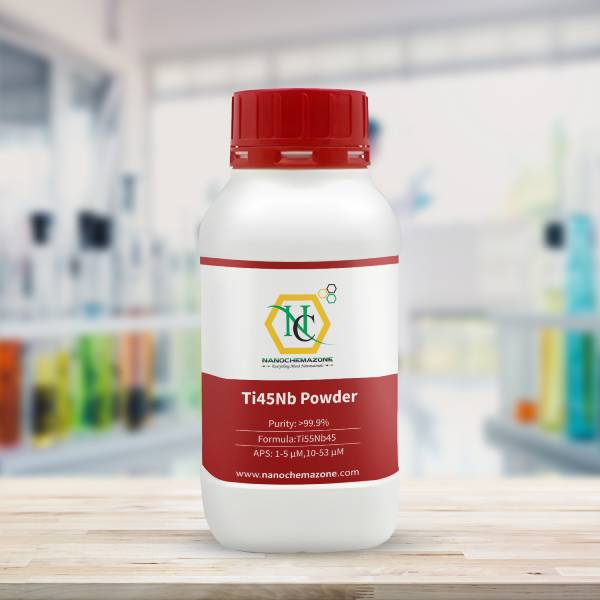
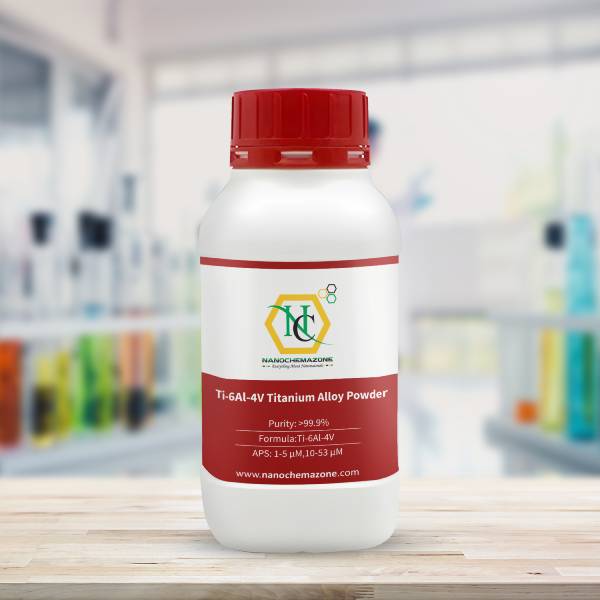
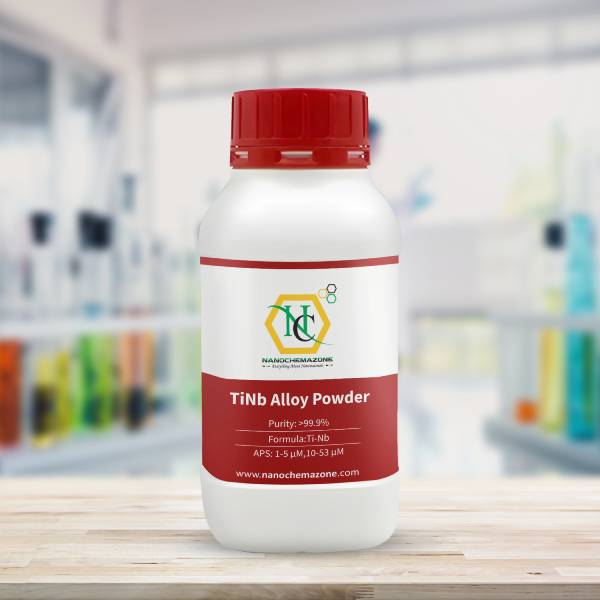
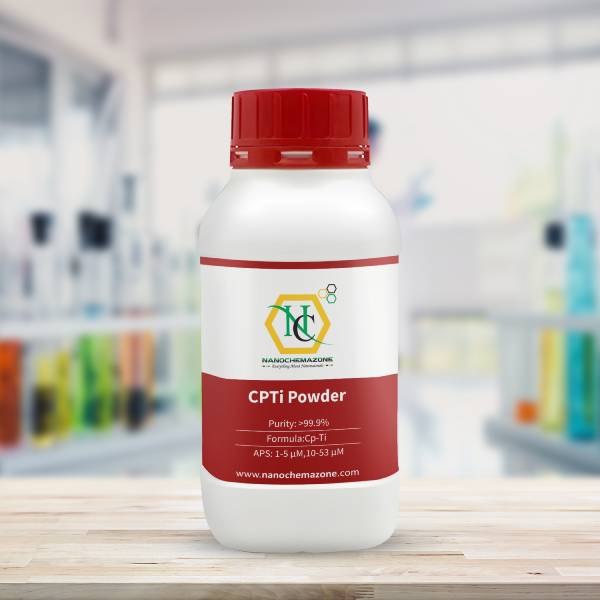
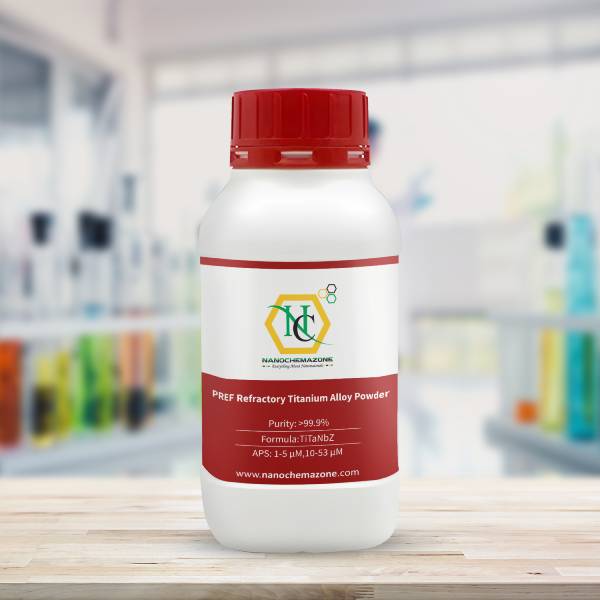
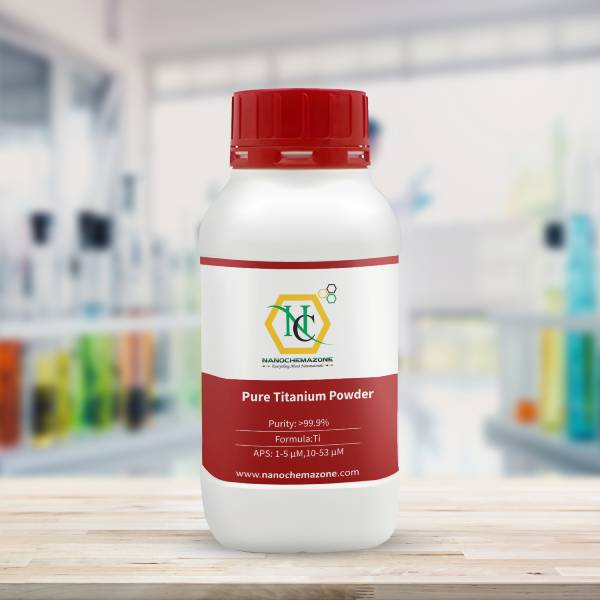
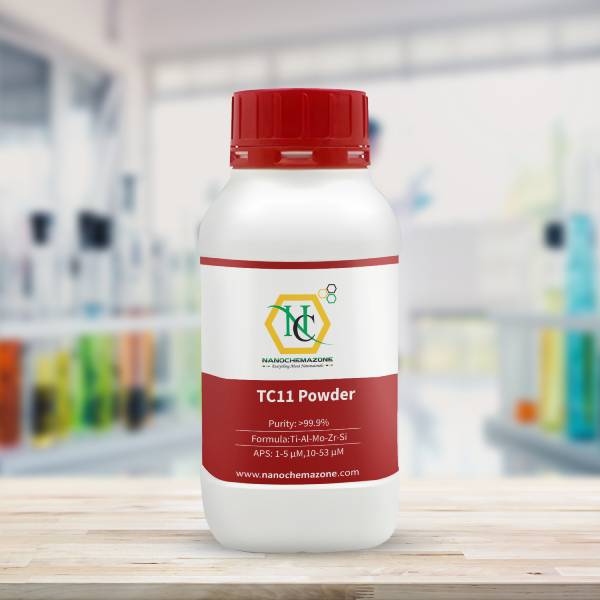
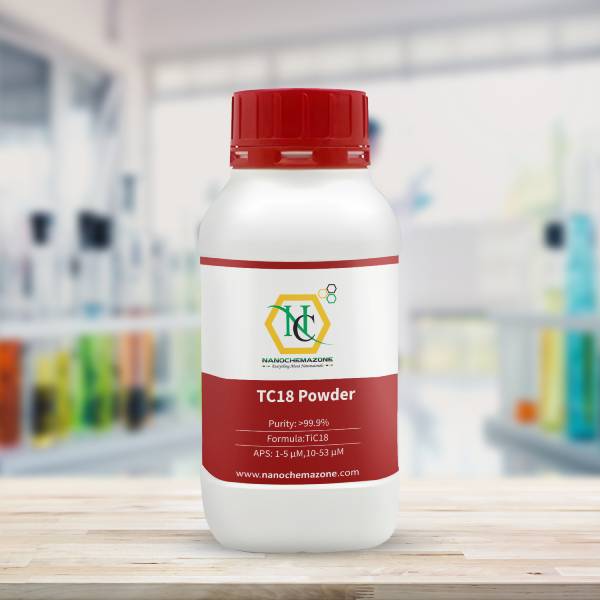
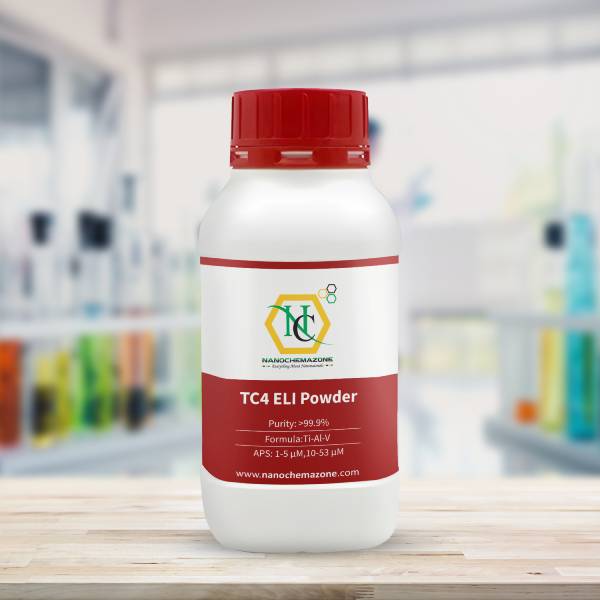
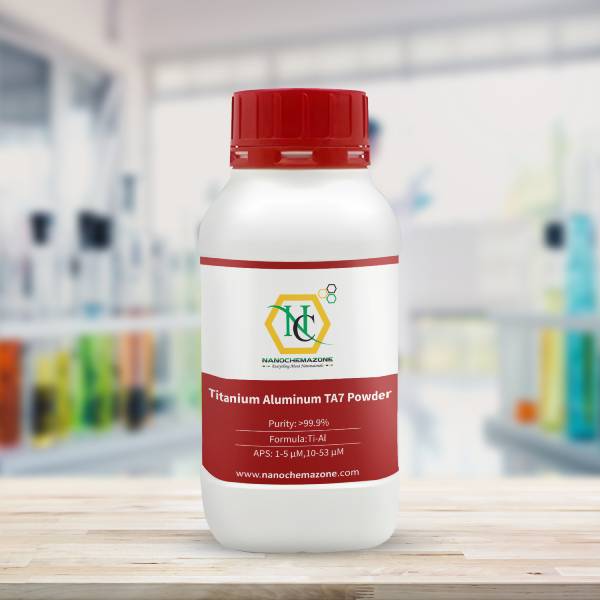
Reviews
There are no reviews yet.